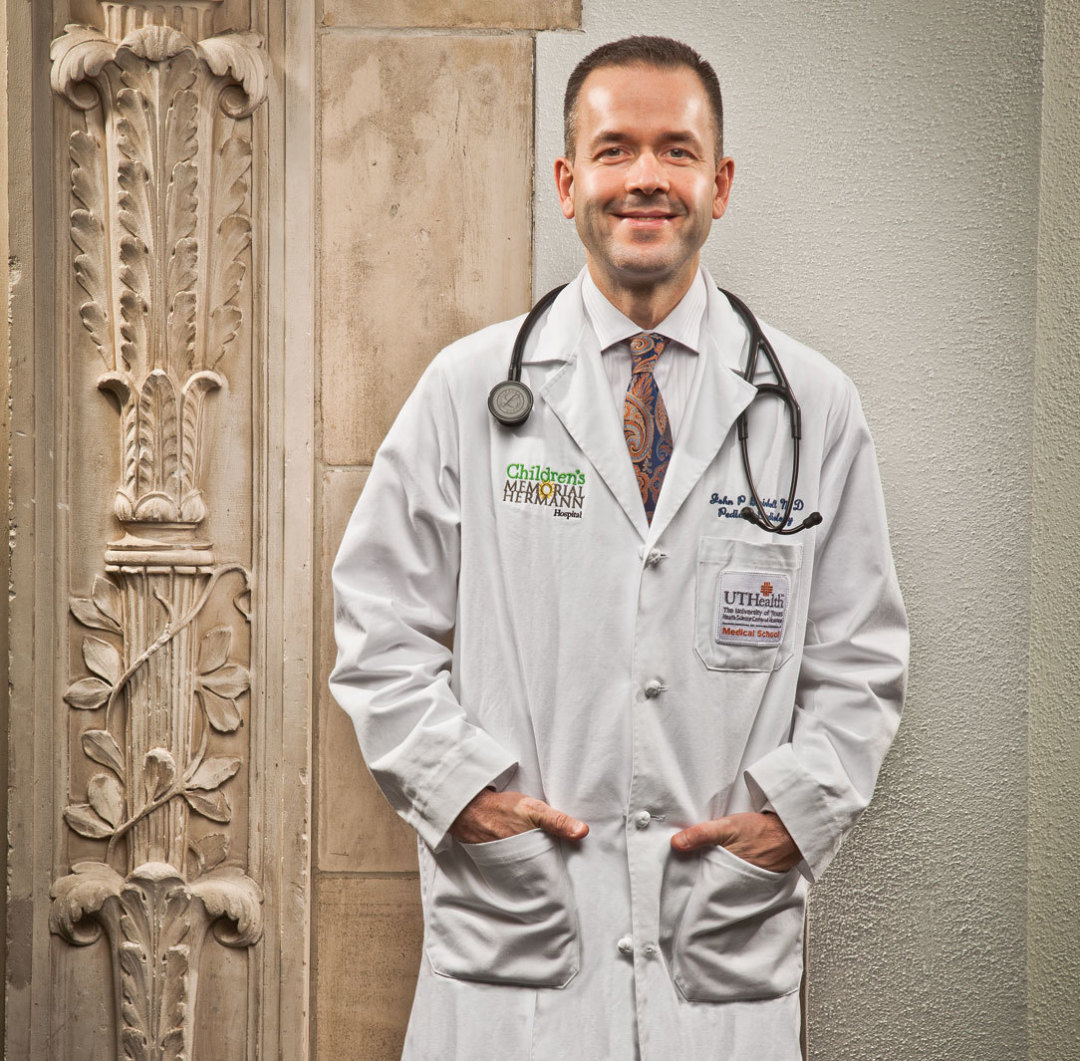Matters of the Heart

Dr. John Breinholt
Image: Charles Ford
Most of us know that heart murmurs are unusual sounds that come from the chest, but what do they mean? Are they always dangerous? Dr. John Breinholt, Chief of Pediatric Cardiology at Children’s Memorial Hermann Hospital and Director of the Division of Pediatric Cardiology, Associate Professor, UTHealth Medical School, specializes in treating heart issues in young patients, including congestive heart failure and congenital heart disease. He told us all about heart murmurs, as well as his work with young patients.
What made you want to become a pediatric cardiologist?
I started working with one when I was a medical student. He was a fantastic mentor and introduced me to congenital heart disease. I was fascinated by the different problems the heart can have, and excited at the different things we could do to help children with these problems.
What is the most rewarding part of your job?
I am an interventional cardiologist, which means I do nonsurgical procedures that can treat heart defects. There is nothing more exciting than coming out of the catheterization laboratory and telling parents their child’s heart problem is fixed, or at least better.
What exactly is a heart murmur?
A heart murmur is a sound. It is not a disease or necessarily a problem. I often tell families it’s a sound that tells us to listen and evaluate carefully to see if there is something wrong. Murmurs are typically the sound of blood crossing a valve or other structure in the heart or blood vessels. The sound may be there because there is something wrong with the valve, heart, or blood vessel. Or it can be innocent and mean nothing.
Are there different types of heart murmurs?
Yes. Murmurs are classified different ways. They can be systolic and diastolic, which refers to when they occur in the cardiac cycle. They are graded from 1 to 6 based on intensity. They are described based on how harsh or long they are. The goal is to use these different descriptors to determine where they are coming from, what heart structure may be affected, and how likely it is that it represents a health risk.
How do you treat heart murmurs?
We don’t treat them. We will treat a heart problem that we may have discovered because of the murmur, but the murmur is just a sound. Even after a successful intervention, a murmur may persist. The important thing is to be evaluated to see if anything needs to be done.
What are common warning signs or symptoms of heart murmurs in adults and children?
Any symptoms will be related to whether there is a heart problem. If none, it will only ever be a sound – nothing more. If there are symptoms, it will depend on what heart problem caused the murmur.
How common are heart murmurs in children?
Very. There are estimates that 60 to 80 percent of children will have a murmur at some point in childhood. There might be more that aren’t detected. Fortunately, the majority are innocent and don’t indicate a problem with the heart.
Do heart murmurs last forever?
Mostly no. The innocent ones, in particular, tend to go away as the child grows. Some appear in later childhood but then resolve. If they are related to a heart problem or defect, it will depend on what was done to treat the heart problem.
Murmurs can be benign.
When nothing’s wrong, what can cause these sounds? Innocent heart murmurs are often due to rapid blood flow through the heart, which can be caused by:
- Strenuous exercise or physical activity
- Excitement or fear
- Fever
- Anemia
- Variations in artery size and angles as the child grows
Murmurs can be abnormal.
Abnormal is how doctors describe murmurs caused by an underlying problem. Here are some conditions that cause murmurs:
Heart valve stenosis, which can be congenital, refers to valves that don’t allow enough blood to flow through them.
Heart valve regurgitation, which can be present at birth or develop later in life, is a condition caused by the improper closure of valves, leading to blood leakage.
A hole in the heart is a common cause of abnormal murmurs in children.
Cardiac shunts occur when blood flows abnormally through holes in the heart chambers or through the pulmonary and aortic valves.
Valve calcification is hardening or thickening of valves that occurs with age.
Mitral valve prolapse is a condition caused by the improper closure of the valve between the heart’s left atrium and left ventricle.
Turner’s syndrome is a chromosomal abnormality affecting girls that often causes heart defects.
Endocarditis is an infection of the heart’s inner lining often caused when germs from
another part of the body spread through the bloodstream and lodge in the heart. It is usually seen in patients who already have other heart problems.
Rheumatic fever, rare in the U.S., is a disease that develops when previous infections like strep throat and scarlet fever are incompletely treated.
